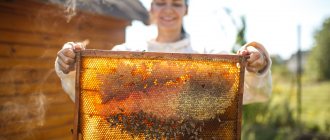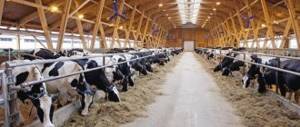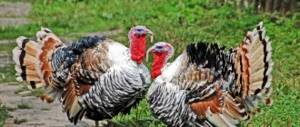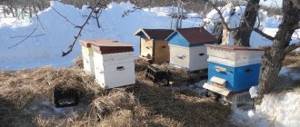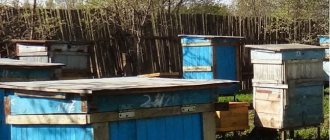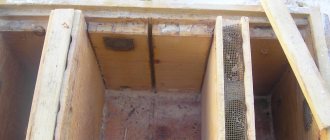Where to begin
Sometimes many newcomers, when faced with the first problems, quit their business. To prevent this from happening, at the first stage a novice beekeeper should study:
- conditions for keeping and wintering bees;
- apiary arrangement;
- types of hives, placement rules;
- acquisition and production of frames, conditions for collecting honey;
- rules for caring for bees and hives;
- conditions for storing honey and selling bee products;
- requirements for beekeeping equipment;
- composition and reproduction of the bee colony.
Getting practical skills in a working apiary is the right decision. Knowledge without experience is only 50% of success. It is also important to decide what form of apiary farming will be.
Types of apiary
Organizing an industrial apiary in Russia requires large material costs, the presence of at least 500 hives and the attraction of additional labor. In addition, the beekeeper and assistants must have sufficient practical and theoretical experience in beekeeping.
For an amateur apiary, a stationary type is suitable, which can be processed independently. In addition, the hive is always under supervision and the owner takes care of the bees at a convenient time. Significant disadvantages are the small amount of honey only for your own needs, and you cannot place many houses at the point.
Nomadic apiary is a profitable activity for individual entrepreneurship. Moving to honey growing areas allows you to increase the volume of honey in a short period of time. Disadvantages: attracting additional workers, having a trailer for transportation, living in the field, searching for honey supplies, constant supervision, transportation costs.
Mobile nomadic apiary will ensure good honey collection
Purchase of inventory and equipment
Where to start equipping your apiary? Safety and comfort when working with bees largely depend on the correct choice of equipment and inventory. Therefore, you should pay special attention to important purchases.
The designs of hives are different. Each has its own advantages and disadvantages. A novice beekeeper should choose the Dadan type, switching to multi-body hives as he gains experience.
Dadanovsky type
Beekeeping requires a certain set of tools:
- bee chisel;
- a brush with horsehair bristles;
- honey extractor;
- smoker
When purchasing any item, you should pay attention to its ergonomics. Inconvenient devices can lead to emergency situations, putting the beekeeper's health in danger.
You can reduce the time spent selecting and purchasing equipment by purchasing ready-made sets that include all the items a beginner needs. In addition to equipment and tools, you should carefully stock your first aid kit. The legislation provides for the need to register an apiary. Even maintaining a single bee colony requires a passport.
Beekeeping equipment
In conclusion, we can say that setting up an independent apiary farm from scratch is an exciting, but labor-intensive process. To obtain a productive apiary, it is necessary to create and take into account many aspects. In addition, it is recommended to conduct allergy tests before keeping bees. You will need to carefully study the development and life processes of bees, select and purchase equipment and inventory. Bee families should be legally registered by obtaining passports for them. However, if you correctly plan the installation site, the regime of preventive measures, and maintaining a bee farm, it will bring income in the form of an environmentally friendly product.
5 1 vote
Article rating
What you need for an apiary from scratch
An important organizational point is the choice of area for the apiary. The main condition is the variety of honey plants, where the flowering of one plant is replaced by other species.
To engage in beekeeping, it is necessary to determine the food supply. Conditional norm that bees take from 1 hectare of area:
- white acacia – 600 kg;
- linden – 600-1000 kg;
- sunflower – 30-60 kg;
- white clover – 75-100 kg;
- fireweed - 350-500 kg;
- sainfoin – 100-400 kg.
Fireweed is a wonderful honey plant for bees.
For those who live in the private sector near fields and meadows, you can organize a small apiary on your personal plot. The situation is more complicated for those who want to take up beekeeping in the city. In this case, a dacha cooperative is suitable. The only condition is to take precautions and erect a fence 2 meters high. You should also find out about existing apiaries in the nearest area.
You can join a beekeeping society. A novice beekeeper will receive both help in the form of advice from more experienced mentors and a plot. Even many women find beekeeping an exciting activity. To minimize costs and combine efforts, several apiary farms are combined into one apiary.
What are the requirements for the location of a beekeeping farm:
- Hilly areas are better than lowlands, where there is often dampness and fog. This climate is not suitable for bees.
- Absence near a body of water, especially when honey plants are on the other side.
- Good sun illumination of the apiary in the morning, shade from trees in the daytime.
- Close location of electrical and water supply networks for apiary arrangement.
- The absence of another beekeeping farm nearby at a distance of 2 km, so that the bees do not go to other people's hives.
- The absence of honey plants that are treated with pesticides, places with infectious insect diseases.
- Distance 500 m to livestock farm.
- The distance between the apiary and social infrastructure facilities is 300 meters.
- Located at a distance of 3-5 km from the highway, confectionery factories, chemical plants, sugar factory.
A good place for a nomadic apiary is a sunflower field.
Preparatory actions do not end with choosing a location. The next step is the arrangement of outbuildings and houses for bees. You will also need a dwelling with three rooms: one for the beekeeper, another for storing honey, the third for equipment, frames and hives. To organize a nomadic apiary, you need to purchase a special van.
Dowsing
Many articles have been written on the topic of dowsing.
A geopathogenic zone is negative energy that is harmful to bees.
Dowsing helps to identify such areas. Physicists and dowsers have not come to a consensus. Some advise placing hives at the intersection of frames, others - in a clean area.
The principle of operation of the dowsing device is as follows: they make a frame of metal wire with a diameter of 5 mm, take it in their hand and begin to move along a piece of land. The frame rotates in the geopathogenic zone depending on which hand it is in; if in the right, then turn to the left and vice versa. Where there are no signs of movement, the area is considered clean and suitable for bees.
Which hives to choose
There are typical hive designs:
- Dadan-Blatt for 12 frames;
- Dadan for 10 frames;
- multi-hull;
- lounger 16 and 12 frames.
The structures do not affect the productivity of bees. Disassembly, assembly, loading, transportation simplifies the work of the beekeeper. The choice of hives is influenced by the breed of bees. For the southern type, bedded hives are suitable, for the Central Russian type - vertical ones. In order for insects to orient themselves well, it is necessary to paint the houses in different colors.
Watch the video which hive is better to choose
Which bees to buy
The acquisition of bees is the final finale of the organizational preparation of the apiary. The best time to buy is spring. The criterion for choosing a bee colony is a common species for a given area, as well as:
- the presence of young queens no older than two years;
- up to 12 streets with bees;
- fresh nest;
- if purchased before honey collection, the presence of sealed brood.
You can buy bee packages with or without honeycombs to strengthen your family and increase your apiary.
Watch the video on how to choose the right bee packages
The most common types of bees that are worth keeping are:
- The gray Caucasian breed collects pollen well from forb honey plants, does not allow outside bees to the hives, does not steal honey, and is non-aggressive. Minus - heat-loving insects are afraid of frost and are highly susceptible to infection.
- The Central Russian species is characterized by high productivity, cold tolerance, works effectively with linden and buckwheat, the downside is a tendency to swarm and aggressiveness.
- Ukrainian steppe species are suitable for honey plants: linden, sunflower, buckwheat. It has high cold resistance and tolerates winter well.
- The Krasnaya bee is productive, collects a lot of honey, uses reserves sparingly in winter, raises large brood, and is non-aggressive. Disadvantages include a tendency to swarm.
The cost of foreign families is high, and checks take a lot of time.
Regulatory Requirements
When organizing an apiary by a private individual or entrepreneur, the following requirements are observed:
- A beekeeping farm can be set up on your own land or a rented plot. At the same time, the distance from the apiary to the borders of the neighboring territory is at least 10 meters. If such a distance does not allow a small estate, then install a fence up to two meters high.
- It is prohibited to place an apiary at a distance of less than 100 m from cultural and social institutions.
- It is advisable to provide a stationary apiary with plantings of trees and shrubs.
- The number of bee colonies in one area is no more than 150.
- The distance between hives is 3 meters, between rows is 10 meters.
- The surrounding area must be plowed and melliferous plants sown annually.
- There should be no foreign debris or rubbish in the apiary; it is necessary to periodically mow the grass in the area.
- You cannot place hives near high-voltage lines and sources of radiation, airfields, chemical and confectionery industries, sugar factories, and wax processing factories.
- The minimum distance between nomadic apiaries is 1.5 km, from nomadic to stationary apiaries - 3 km.
- It is forbidden to place hives on the path of summer to honey plants from another apiary, which was created earlier.
- Nomadic farming is established after notification to the sanitary service of the district or city.
- The hive should be kept clean and in good condition. On the facade of the bee house there is a landmark entrance, which is equipped with a waste area.
- Availability at the apiary of spare hives and frames, disinfection and hygiene products, a first aid kit, storage for equipment and beekeeping products.
- Arrangement of a finished house for a cold area with severe frosts. This is a dry and well-ventilated room, and the temperature should be kept from 0 to 6 degrees, humidity no more than 85%.
In cities and towns it is allowed to have peace-loving insects: Italian, Caucasian, Karpatka.
One of the problems in maintaining an apiary can be swarming of bees. This condition is especially dangerous for people, especially small children. A swarm can not only bite, but also frighten. Therefore, the beekeeper is obliged to prevent insects from swarming.
The set of measures includes placing bee houses in the shade, forming anti-swarm layers, and providing the area with honey plants. 2 weeks before the honey harvest, the beekeeper adds frames with foundation to the hive to keep the bees busy. One of the reasons for swarming is the old queen; it should be changed every 2 years.
Bees have begun swarming on frames with foundation
How to create your own apiary
I would compare creating an apiary to some extent with creating your own business, that is, with entrepreneurship. In the sense that out of hundreds of beginning beekeepers, after several beekeeping seasons (especially unsuccessful ones), only a few remain. Creating an apiary is only half the battle (if not less), but maintaining your beekeeping farm in good condition and generating income from the apiary already requires effort.
So, thoughts about your own apiary have been living in your head for a long time, where to start, how to get bees? First of all, two very important questions need to be addressed:
- Can you work with bees? Have you had any experience working with bees? Do you have a fear of being bitten? If you have no experience with maintaining bee colonies and there is a fear of stings, maybe you shouldn’t create your own apiary?
- Why do you need an apiary? As a hobby and to satisfy your needs for honey and bee products, or to obtain your main income? These are different things that require different approaches.
We have decided on the above questions and now it’s time to return to the question: where to start? Let's consider the option of creating an apiary with a couple of dozen families with the prospect of further growth. I have already argued (here you can read - “Basic means in beekeeping”) that the most important thing for an apiary is the availability of land (plot) where the hives will stand. Therefore, you should start by choosing a place for the apiary.
Plot for an apiary. The easiest way is to purchase a plot of land in a sparsely populated village. Possibly with a house, a bathhouse and a shed. Ideally, an area where bees have already been kept: there is a room for wintering bees - a winter hut, a workshop for making or repairing hives, etc. You should pay attention to the presence of forests, ravines, meadows, woodlands around the apiary and the absence of large reservoirs and agricultural fields.
It is very desirable to have early spring honey plants and pollen plants, in particular willow trees and shrubs, in the immediate vicinity of the apiary, and they grow, as is known, near water (rivers, streams, dams, marshy areas). Having an early source of food will greatly help bee colonies in spring development. Otherwise, you will have to transport the bees somewhere for development, or feed them.
In such a sparsely populated village, usually as weeds, in abandoned vegetable gardens, in alleys, outside the outskirts, many good honey plants grow, for example, the same prickly thistle. The lack of livestock (cows, horses, sheep, goats, pigs) among the local population is also a plus for the beekeeper - plants that provide nectar and pollen to bees will not be eaten or trampled.
You can find a place for a future apiary in our vast country without any problems. Well, maybe it’s not easy around large cities (in particular around cities with a population of over a million), but the distance from a large city is only a plus: the products turn out to be environmentally friendly.
We found a place for the apiary, prepared a point, surrounded it with a solid two-meter fence, decided on the location of the hives in the apiary, hammered in the pegs, installed the hives, now we are buying bees.
Before bees, you need to acquire beekeeping equipment, which can be bought in beekeeping stores or second-hand through advertisements. Bees can be purchased in packages and families. It’s up to you to decide which is better, a bee package or a bee colony, but I would advise purchasing full-fledged colonies from beekeepers from nearby areas and making layering. Finding bee packages or bee families through advertisements (the same avito.ru to help) is not difficult.
Don’t forget about this practically free way to get bees by catching stray swarms. In this case, it is not at all necessary to climb trees in the forest, hanging swarm traps. It is enough to place traps or swarms with “Apiro” in the right place at the right time. Namely, at some distance from the apiaries (but not among the hives) and preferably towards the nearest forest.
An old unusable hive or a broken frame box (frame box) will be used for the trap. With the same old dryness. As an option, make a trap from scrap materials (remnants of plywood and fiberboard, cardboard) so that you won’t feel sorry if something happens.
Buying an apiary is another way to have bees. The simplest and fastest. And the most expensive, because someone takes care of everything, but most likely you will still have to look for a place for an apiary. What this includes: fully stocked hives with bees and all the necessary equipment + consulting on beekeeping issues. Therefore, if you have money to live on and beekeeping is perceived as a hobby, then a turnkey apiary is just right. Moreover, now there are companies offering such services, you can find them on the Internet.
That's all! Now you have your own apiary, congratulations!
